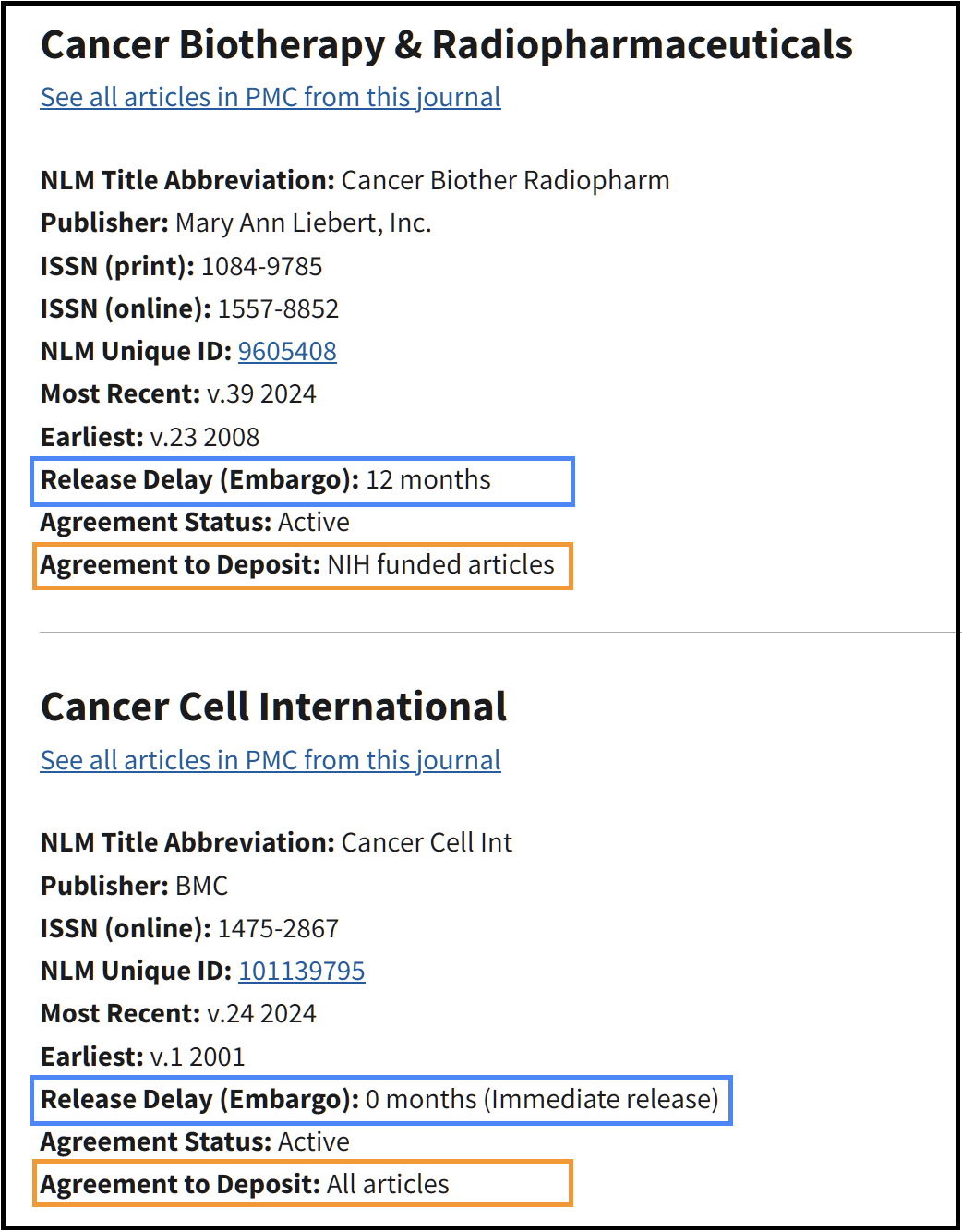What is my journal's policy?
Check the journal list to see who will be depositing your paper into PMC. You will see one of the following listed:
- "Agreement to Deposit: NIH funded articles": Journals who only submit NIH-funded articles to PMC
- "Agreement to Deposit: All articles": Journals who submit all articles to PMC
Default embargoes for journals are also included. Per the NIH, if your paper must be made immediately available and your journal has an embargo period, you will need to make arrangements with your publisher to have the paper deposited without an embargo period.
You can also check the "For Authors" or "Instructions to Authors" section of your publisher's website or use Open Policy Finder.
Selective Deposit Programs
Certain open access agreements allow the publisher to deposit the article into PMC even if the publisher doesn't participate in PMC. The publisher would also need to be indexed in MEDLINE and the article must acknowledge support of a PMC designated funder or a member of the Europe PMC Funders Group. You must check with your publisher to see if your journal falls under this category and check the NIH's Selective Deposit Collections page.

How to deposit your manuscript into PMC
As soon as the manuscript is accepted for publication, you will need to start the process of depositing the paper into PubMed Central or PMC. PMC is an archive of biomedical and life sciences NIH-funded research. Once finished, you will have a PMCID (PubMed Central ID) you will use to demonstrate compliance. PubMed Central is not the same as PubMed, and a PMCID is not the same as a PMID.
Submitting a final peer-reviewed manuscript to PMC via the NIHMS involves three tasks:
- Deposit manuscript files and link to NIH funding
- Step-by-step instructions for depositing the manuscript
- Authorize NIH to process the manuscript
- The authors will receive an email seeking approval for this
- Approve the PMC-formatted manuscript for public display
Authors (or someone they delegate) can submit the final peer-reviewed manuscript (not the final published version) to the NIHMS. Submitting to NIHMS is the only way an author can submit manuscripts to be added into PMC, if the journal publisher doesn't deposit it for them.
The NIHMS ID (NIH Manuscript Submission), is not a permanent substitute for a PMCID. It is assigned when the deposit process is started, and is only valid for three months post-publication.
The NIHMS will email the author and all PIs the citation with the PMCID once it is assigned. PMC will automatically make the paper publicly available after the designated delay period has expired.

